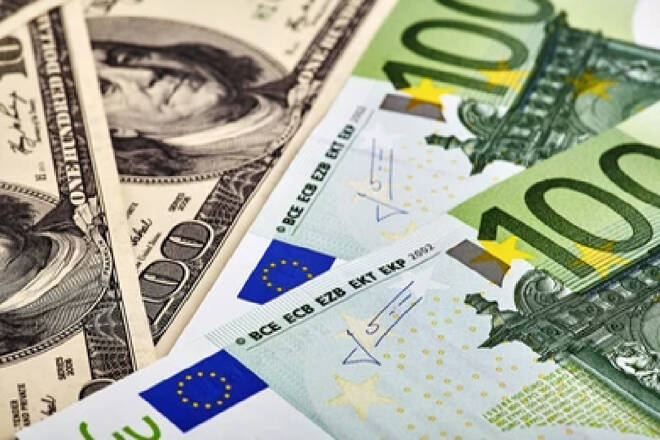Advertisement
Advertisement
EUR/USD Forecast: Is Recession Looming? PMIs and Powell Take Center Stage
By:
With EUR/USD experiencing fluctuations, eyes are on Eurozone PMIs and Powell's outlook, potentially redefining forecast analyses amidst economic uncertainties.
In this article:
Highlights
- EUR/USD rose 0.08% on Friday, ending the week down 0.67% to $1.05739.
- Euro Area Manufacturing PMIs draw investor focus amid softer inflation figures.
- Today, Powell’s speech and the ISM Manufacturing PMI will influence USD’s demand.
Friday Overview
On Friday, the EUR/USD rose by 0.08%. Following a 0.60% gain on Thursday, the EUR/USD ended the week down 0.67% to $1.05739. The EUR/USD fell to a low of $1.05565 before reaching a high of $1.06171.
Euro Area Manufacturing PMIs in the Spotlight
After the softer inflation figures, investors will turn to the euro area manufacturing sector and unemployment.
Manufacturing sector PMIs for Italy and Spain and finalized PMIs for France, Germany, and the Eurozone will garner interest. Barring marked revisions to the French and German PMIs, the PMIs for Italy and the Eurozone will impact more.
Economists forecast the PMI for Italy to increase from 45.4 to 45.7. According to prelim numbers, the Eurozone Manufacturing PMI fell from 43.5 to 43.4 in September.
Notably, investor sensitivity to manufacturing sector PMIs will increase despite the sector accounting for less than 30% of the Eurozone GDP. Softer inflation figures will redirect investor attention from inflation to the economic outlook. Weakness across the private sector would raise the threat of a prolonged Eurozone recession.
Eurozone unemployment figures are unlikely to influence buyer appetite for the EUR. Economists forecast the unemployment rate to hold steady at 6.4% in August.
Fed Chair Powell and the ISM Manufacturing PMI in the Spotlight
Later today, the US manufacturing sector will also be in focus. Economists forecast the more influential ISM Manufacturing PMI to increase from 47.6 to 47.7. The US manufacturing sector contributes less than 30% to the US economy and may not influence the Fed and its policy intentions.
However, an unexpected slide in the headline PMI and the employment PMI could fuel recessionary jitters. While investors ease bets on further Fed rate hikes, sensitivity toward weak economic indicators may intensify.
Beyond the numbers, Fed Chair Powell will speak today. Hawkish chatter and comments relating to the recent inflation numbers will influence demand for the dollar.
Short-Term Forecast:
The divergence in monetary policy continues to favor the US dollar. However, sentiment may materially change this week. A slump in the US service sector activity and softer wage growth could ease the pressure on the Fed to maintain a hawkish rate path.
EUR/USD Price Action
Daily Chart
The EUR/USD remained below the 50-day and 200-day EMAs, affirming bearish price signals.
A EUR/USD drop below the $1.05230 support level could give bears an opportunity to reach the $1.03922 support level.
Weaker-than-expected euro area private sector PMIs and a hawkish Fed would pressure the EUR/USD.
However, a EUR/USD return to $1.06 would support a move to the $1.06342 resistance level.
The 14-period Daily RSI at 35.17 suggests a EUR/USD fall to the $1.05230 support level before reentering oversold territory.
4-Hour Chart
The EUR/USD sits below the 50-day and 200-day EMAs, reaffirming the bearish price signals. A break above the 50-day EMA would support a EUR/USD run at the $1.06342 resistance level.
However, failure to break above the 50-day EMA would leave the $1.05230 support level in view.
The 14-period 4-Hourly RSI at 48.47 indicates a EUR/USD fall to the $1.05230 support level before entering oversold territory.
About the Author
Bob Masonauthor
With over 20 years of experience in the finance industry, Bob has been managing regional teams across Europe and Asia and focusing on analytics across both corporate and financial institutions. Currently he is covering developments relating to the financial markets, including currencies, commodities, alternative asset classes, and global equities.
Latest news and analysis
Advertisement
